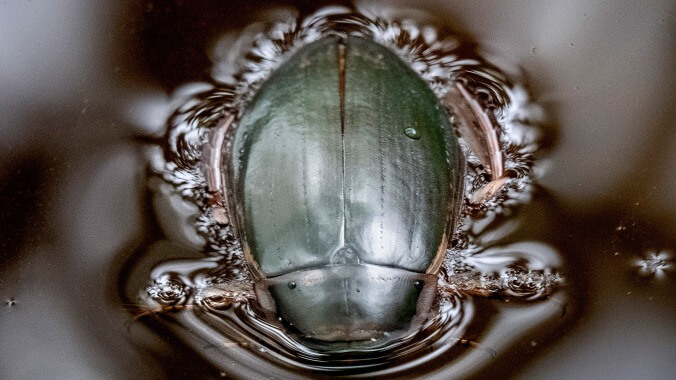Meet the Beetles: This jewelry is made from live insects

We explore some of Wikipedia’s oddities in our 6,277,340-week series, Wiki Wormhole.
This week’s entry: Live Insect Jewelry
What it’s about: The creepiest fashion trend since those running shoes with individual toes. In several parts of the world, at several points in history, there have been trends of incorporating live insects into jewelry.
Biggest controversy: Animal rights activists have unsurprisingly objected to the practice, which some people find exploitive of animals that “have a similar capacity to feel pain as other mainstream pets.” But one objection was more concerned with the welfare of the wearer, as an animal rights activist told the New York Post in 2006 that insect jewelry was “just the gift for the person who doesn’t mind a small animal excreting on them throughout the day.”
PETA, perhaps unsurprisingly, took their objection too far, to the point of rooting for apocalypse and welcoming our new insect overlords. “Roaches will inherit the Earth,” said PETA spokesperson Michael McGraw, “and if it’s between the desperate people who wear [roaches as jewelry] and the roaches, our money’s on the roaches.”
Strangest fact: Wearing bejeweled beetles was practiced by the ancient Egyptians and Mayans, but also made it into 21st-century fashion. Designer Jared Gold decided to one-up traditional beetle jewelry by designing a “roach brooch,” in which giant Madagascar hissing cockroaches were hand-decorated with Austrian Swarovski crystals, and sold with a roach-sized leash as an accessory. Gold sparked a short-lived trend in 2006, with a roach brooch even making it onto America’s Next Top Model, and we only realize in hindsight that the apartment we were living in in 2006 was extremely fashionable.
Thing we were happiest to learn: It’s possible for a bug to have a good life as jewelry. Assuming you feed your insect regularly and keep it in a well-heated habitat when not being worn, it can live longer than it would have in the wild, although this optimistic scenario does come with a [citation needed].
Thing we were unhappiest to learn: Less unhappy than creeped out, but in Mexico people were paying as much as $500 USD to wear live bugs. In the 1980s, the maquech became popular—it’s a brooch made from a Zopherus beetle, decorated with “paste gemstones, bric-à-brac, and imitation gold.” The Zopherus are slow-moving, hardy, and can live over a month without food or water, making them well-suited to the task of being ornamental.
Also noteworthy: The maquech has a surprisingly romantic origin story. It’s based on either ancient Mayan folklore, or a story made up to sell bug jewelry to tourists. Either way, the story tells a Romeo And Juliet-like story of a Mayan princess who couldn’t marry a prince from a rival house, so she stopped eating and drinking, rather than live without her true love. Before she could die, a healer magically transformed her into a beetle, so she could live as a brooch on the prince’s chest, close to his heart. Which is sweet, but let’s face it, also more than a little creepy.
Best link to elsewhere on Wikipedia: If you can’t understand why cockroaches and enormous ’80s glasses both became fashionable, you may be a fashion victim. The phrase is attributed to Oscar de la Renta, and describes “a person who is unable to identify commonly recognized boundaries of style.” Victimization can involve embracing a fad after it’s passed, altering your look too frequently and dramatically (according to no less an expert than Gianni Versace), or over-spending on designer clothes (and bugs, apparently) to try and keep up with trends.
Further Down the Wormhole: Fashion design, as with most disciplines, embraces the KISS principle (“Keep It Simple Stupid,” not “rock and roll all night and party every day,” although sometimes that one too). But keeping it simple was anathema to Rube Goldberg, a cartoonist who became famous for designing elaborate contraptions that turned even the simplest task into an unwieldy process with dozens of steps.
Engineers worldwide have embraced the absurdity of Goldberg’s design, and made an in-joke of the turboencabulator, a fictional device known for its incredibly elaborate description. We’ll examine its hydrocoptic marzlevanes next week.